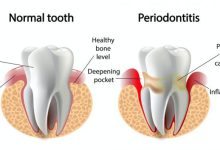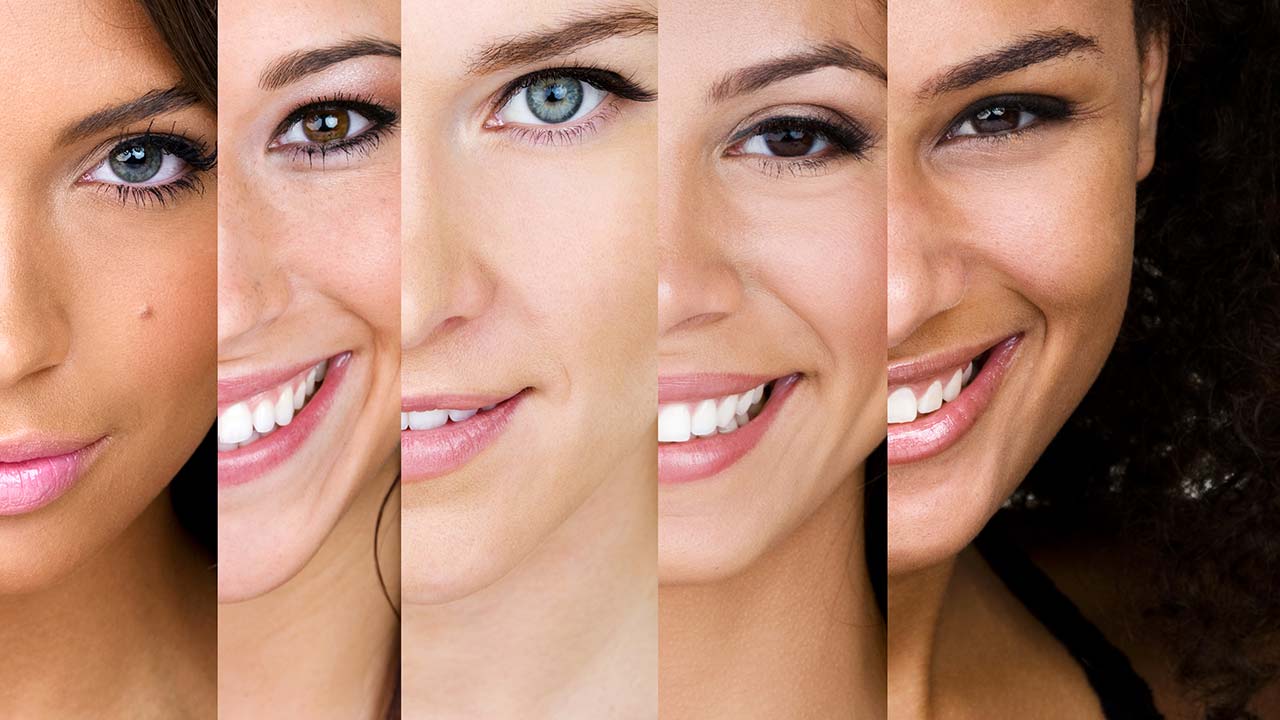What is Orthodontics treatment?
Orthodontic treatment is a way to smooth, improve their appearance and function and also helps maintain healthy teeth, gums, and jaws in the long run with a bit of pressure on the entire tooth.
Why do we need orthodontics?
Most people have broken or cracked teeth, and orthodontic treatment makes the teeth as smooth and mobile as possible. This movement improves the appearance and condition of the teeth when biting and even makes them easier to clean. Some people have very front teeth that look bad. These prominent teeth are more likely to be damaged, but with the orthodontic treatment, they can be moved back and forth and, in some cases, the maxilla. The lower part of the teeth is not in the right place and makes the teeth look improper and irregular when biting, and this treatment corrects both factors.
When the teeth are not correctly aligned, it causes pain and pressure on the jaw muscles and causes jaw joints and headaches. Orthodontic treatment helps to keep the upper and lower jaw straight and reduces pain in this area.
At what age is an orthodontic treatment best done?
What is the best age for pediatric orthodontics?
It is generally the best time of childhood, but they can also do orthodontics in adulthood. Age is less important than having the correct number of teeth. In children, you have to wait until enough teeth come out and then start orthodontic treatment, so naturally and the best time to start caring for the beauty and order of teeth or orthodontics is the best and highest result. It is worth noting that the time has come for irregularities to appear in the teeth; this is the time of decay of deciduous teeth and the growth of permanent teeth.
The American Dental Association recognizes the best time to start dental examinations from the age of 7 and the best time to start orthodontics after 8-9. At this age, the range of regrowth and change of teeth can be determined.
At this age, due to the onset of large mill teeth, the dentist can assess the condition and formation of the tooth and can easily distinguish the angle between the upper and lower jaws.
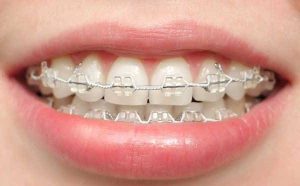
The general opinion of dentists in European and American countries is that the maximum time is up to 10 and a small number is up to 12 years, after which the desired result is not easily achieved, and after these ages, tooth and jaw growth is relatively high.
Orthodontics in the elderly and adults:
Many older people decide to have orthodontics, and these people should be aware that the growth of the jaw and teeth is over. Nothing can be done at this age, but if orthodontics at this age is to align the teeth, we must say that This can be done, as long as they have healthy gums, so the alignment of the teeth at older ages due to having healthy gums can be done in addition to the complexity. Still, it is not possible to change the jaw.
Who does orthodontics?
Your dentist may also do orthodontics, or they may refer you to an orthodontist.
The most important thing is a thorough examination, which includes a simple look at your teeth, an X-ray, and a plastic model of your teeth. The dental team or orthodontist will then decide how to treat you. Once you have decided on orthodontics, treatment can begin as soon as you have permanent teeth.
Is it necessary to create enough space in the jaw of the tooth?
Your jaw may not have enough space for your permanent teeth, in which case you will need to extract a number of your permanent teeth to create the jaw. In this case, your dental team will be notified, and sometimes, with different treatment methods, enough space will be made.
How many models and methods are Orthodontics treatments?
Types of dental wiring:
Orthodontic treatment can be done with different models of devices, which most people call dental wiring.
What is movable wiring?
Simple treatments may be performed with movable wires. (A device that can be taken out of the mouth for cleaning.) This device has thin and sensitive wires that have several springs next to them that move them by applying gentle pressure to the teeth.
What is permanent wiring?
Sometimes, the teeth are guided more precisely than moving to the wire, and in this stage, permanent wiring is used. This model has hooks and straps that are temporarily attached to the teeth. The flexible wire adapter connects all the themes and allows the teeth to move. You can not pull this type of wire out of your mouth alone; this is called permanent wiring.
What is basic wiring?
Sometimes the growing jaw may change, in which case, basic wiring should be used. This is done with the strength of your jaw muscles and is specific to a particular type of problem.
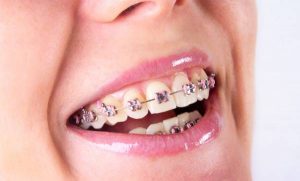
What is a fixed hook or bracket?
Fixed brackets are not always made of metal. Plastic and ceramics may also be used, especially for adults.
What is a preservative?
Just as some people need wiring, they also need a holder. Sometimes the use of preservatives is limited to the evening and night, and if you do not use it, your upper teeth may move forward at the end of treatment.
What is hidden wiring?
They are rigid, colorless plastics used to align teeth and include a variety of unique molds. Each patient has their pattern, and each set is used for two weeks. They are made of clear plastic, you have to use these molds for 22 to 23 hours to get the best results, and you can quickly move them to eat, drink, brush and clean the space between the teeth.
What is the type of elastic or spring?
Spring and elastic bands are sometimes used in wiring to help deform teeth, and your doctor will tell you if necessary.
When people hear the word wiring, they think of several wires and some metal objects. However, modern brackets are smaller and less noticeable than the “metal mouth” that many adults remember. In addition, new thermal protectors use body heat to help move teeth and reduce pain.
Ceramic orthodontics:
Advantages: Less noticeable than metal wires. Teeth move much faster than plastic wires (Invisalign)
Disadvantages: The unique type of braces are ceramic braces. Ceramic braces have the same size and shape as metal wiring, except that they have colored or circular wires attached to the teeth, some of which are even wires. They use wires that are even cheaper than metal wires.
Linguistic orthodontics:
- They are like traditional metal wires, except that the brackets and wires are placed inside the tooth.
- Advantages: They are not visible from the outside.
- Cons: Harder, more expensive to clean.
- Not suitable for severe diseases.
- It can be more upsetting at first.
- Regular settings are longer and more complex than the traditional type.
Invisalign wiring or quick orthodontics without wiring:
Short wiring includes 18 to 30 traditional models and is made of clear and custom plastic. The wires are detachable and are replaced every two weeks.

They are almost invisible, and patients can eat and drink whatever they want. This method is not suitable for serious dental problems and is only available to adults and adolescents and not children. They break down quickly and cost little to replace, and treatment can potentially take some time. Rapid wiring is a relatively new and exciting orthodontic treatment that fixes teeth much faster than traditional wires. Quick wiring is an effective treatment option for patients with various orthodontic problems, including the following.
- Incompatible teeth
- The teeth are closed
- The distance between the teeth
- Chewing problems
Fast dental wiring strengthens your teeth and brings you a beautiful and healthy smile that builds confidence in your smile. Typically, this treatment is 50% faster than traditional methods. The duration of treatment depends on the complexity of the teeth, and in more straightforward cases, about three months, and in more complex cases, it may take between 10 and 12 months. This type of dental wire has a different way of working than the traditional type. Fixed wires usually move the crown of the tooth first and then the root. This tool dramatically increases the speed of healing by forcing the tooth’s heart on the first day, which means moving the whole tooth.
In this type of wiring, triangular hooks are used instead of square angles, which increases the flexibility of the wire, and only one wire is used, so the quality of work is high, and its weight will be light.
Are fast wiring methods reliable and safe?
This type of floss is reliable and safe in testing and testing on countless human specimens with 20 years of onset and performance improvement as well as a brilliant track record. In addition to the reliability and speed of treatment in this method, this is the treatment method.
This treatment is suitable for all ages. During the consultation, the dentist will determine if this treatment is proper for you. This treatment was ideal for most patients and is a perfect solution for looking for a quick conclusion.
Advantages of rapid Orthodontics procedure:
The most important advantage of this method is that it works very quickly; in most cases, the treatment period ends in 10 months. Also, the new type of dental floss is much lighter and better than the old type. Also, this new type of floss is designed for quick and easy treatment of the patient. By reducing the size of these wires, they are easier to clean, reducing the risk of oral disease. Due to the high speed of this treatment, the number of visits to the doctor is also reduced, which is more cost-effective than other standard methods in orthodontics.
Short-term treatment is also good news for patients who are usually eager to hear about the length of treatment. Another advantage of this system is that in most cases, there is no need to pull the teeth before installing the wire, tooth extraction can be very anxious, especially for young patients, so this can be a significant advantage.
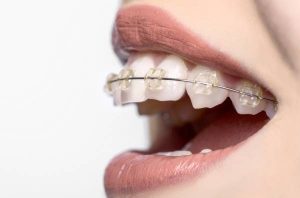
How long does Orthodontic treatment take?
The length of treatment depends on the severity of the problem and can last from a few months to two and a half years. Most people can be cured within one to two years.
Post-orthodontic visit
Orthodontic wiring is usually adjusted every 4 to 6 weeks.
How successful will the Orthodontics procedure be?
Success depends on the orthodontist’s skill and the seriousness and help of the patient (and parents, if the patient is a child). It is essential to follow any instructions provided by your orthodontist and make an appointment with your doctor. Treatment success also depends on the patient’s commitment, and it is essential for orthodontic treatment of children that the patient is as eager to cooperate as his parents.
Does orthodontics damage my teeth and cause discomfort?
All devices may feel strange at first and cause discomfort. If the problem persists, your orthodontist can make the necessary adjustments. If you do not take good care of your teeth during treatment, they may be damaged. Improper cleaning and too much sugar in many foods and beverages can cause permanent damage. Brackets, wires, and pedestals can trap the food on your teeth and cause excessive plaque, so you should thoroughly clean your teeth and orthodontic appliances.
Dental care after orthodontics and observance of health and nutrition tips for dental wiring care:
It is essential to check your teeth with your dentist during orthodontic treatment, and you should also take extra care of your teeth and mouth:
- Brush your teeth thoroughly every day, including between your teeth as much as you can.
- It would help if you made sure that the wires are carefully cleaned not to be damaged.
- Your dental team will teach you specific methods depending on the tools used on your teeth.
- Cut down on fats and sugary drinks: Avoid snacks and sugary drinks, and fizzy drinks.
- Also, hard and sticky foods can damage your wiring.
Finally, brush your teeth at night and at least once a day and use mouthwash if needed. Of course, your dental team may suggest a fluoride toothpaste or a fluoride gel or mouthwash.

Orthodontics During Pregnancy, Important Tips to Know:
Pregnant women may develop tooth and gum allergies due to hormonal changes, which increase blood flow. High sensitivity in natural orthodontics can sometimes be uncomfortable.
Increased estrogen and progesterone can react on your gums and increase your risk of gum disease. This is common for any pregnant woman, whether wired or wireless and can be done with oral health care.
During orthodontic treatment, you should avoid any x-rays and tell your dentist about your pregnancy so that she can use x-rays if necessary.
If you need to pull one or more teeth for wiring, it is best to leave treatment before it is born.
Anesthesia used during the extraction process may not be suitable for you or your baby.
Some women who experience morning sickness during pregnancy find it challenging to use wiring because it may limit their ability to use or hold elastic bands.
Appropriate methods to reduce the pain of dental wiring and definitive ways to reduce pain after orthodontics
While flossing is bothering you, keep in mind that these pains will be natural and short-lived. The good news is that there are simple ways to help reduce pain. Here are some ways to control the pain and discomfort caused by flossing:
Use of ice packs
Ice can also reduce the effects of pain in your mouth. If the newly inserted wires in your mouth are painful, placing a piece of ice on the sore spot can reduce inflammation and pain.
Eat cold foods and drinks.
Items such as ice cubes, such as ice cream or flavored ice, reduce pain and help reduce inflammation and swelling in the mouth. Be sure to brush your teeth after eating sugary foods. Prevent tooth decay You can also minimize toothache by sucking or tasting a piece of ice.

What is the best way to keep your teeth clean after orthodontics?
Use fluoride toothpaste or fluoride mouthwash as one of the main mouthwashes. This is a good solution for materials that not even a toothbrush can clean.
Brush each tooth carefully, from top to bottom and from bottom to top. After brushing all your teeth, use a toothbrush between your teeth. Move from bottom to top and then from bottom to bottom between the two wires.
Make sure you clean all the surfaces thoroughly and then move on to the next section. Repeat this process until all the teeth are immaculate.

